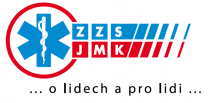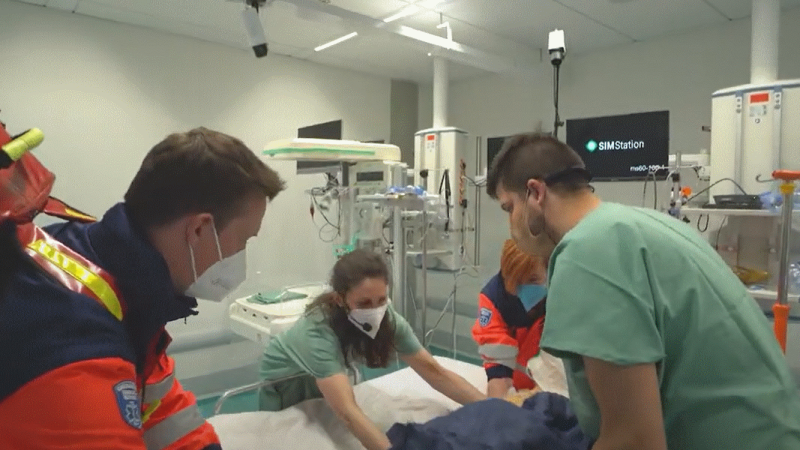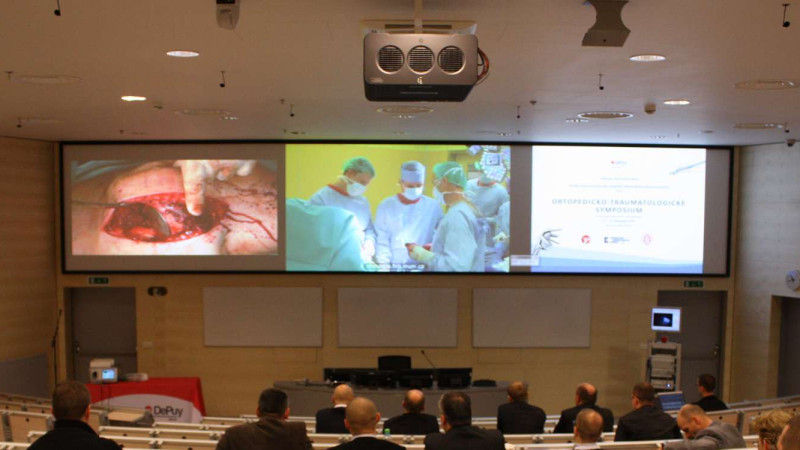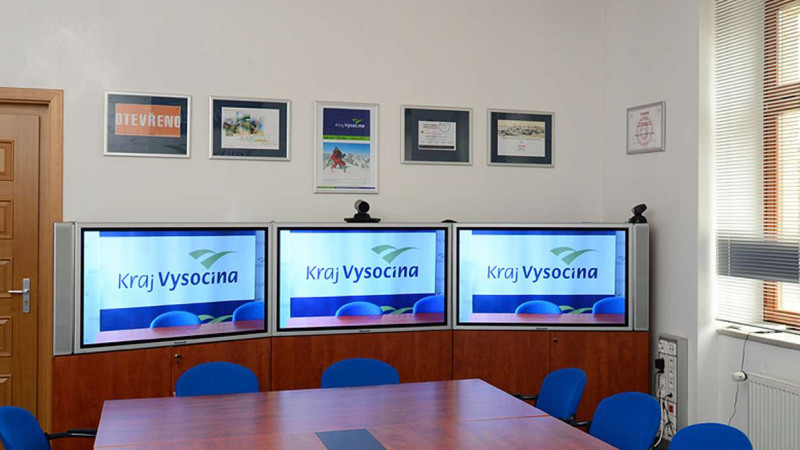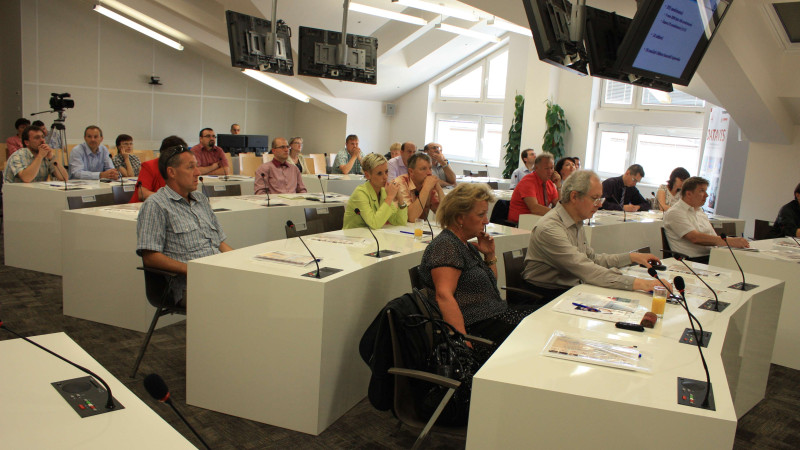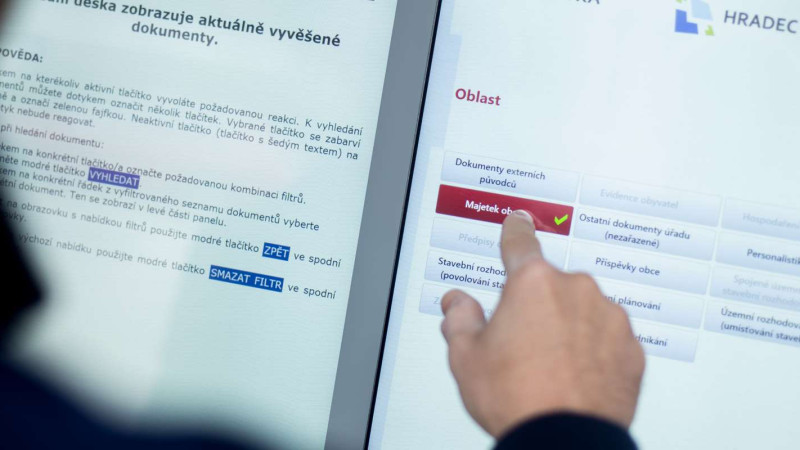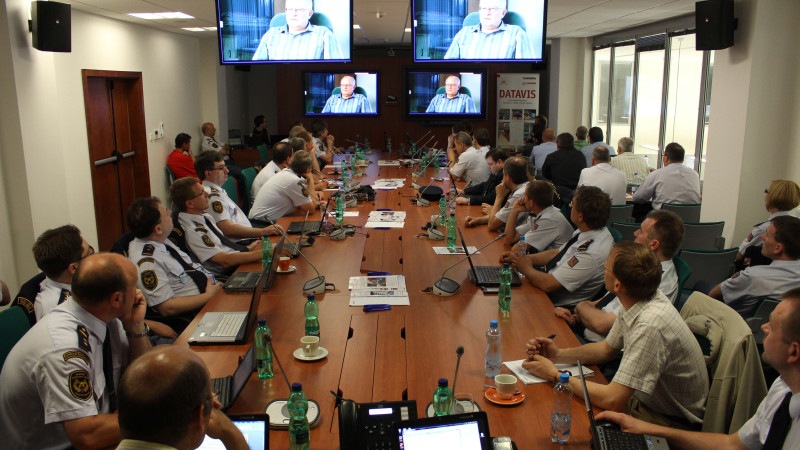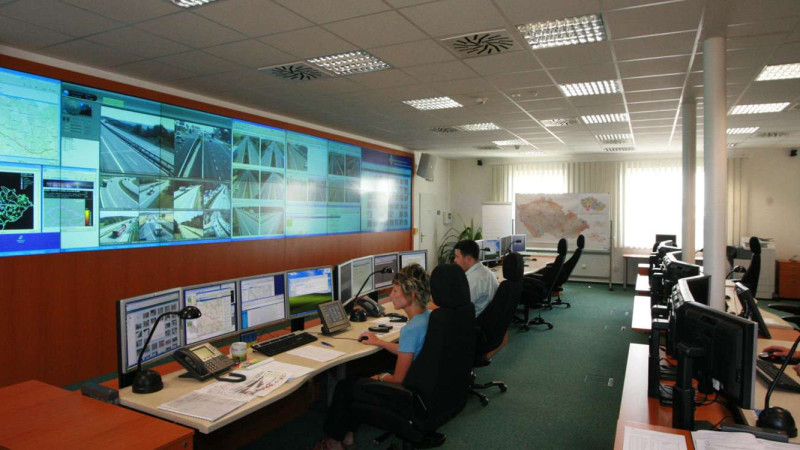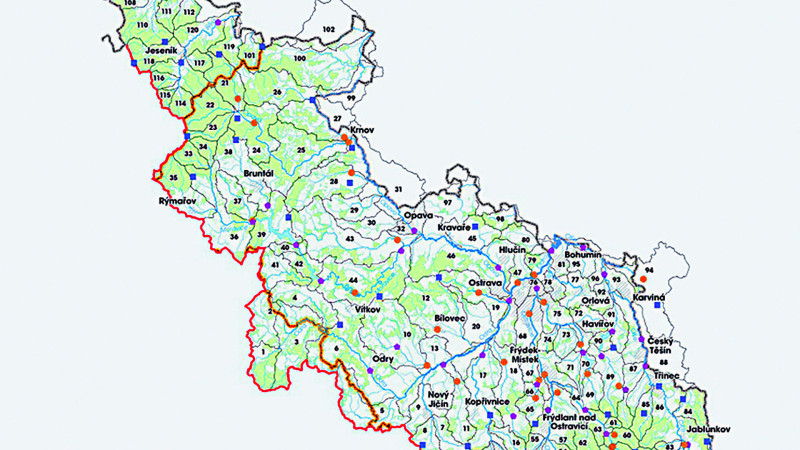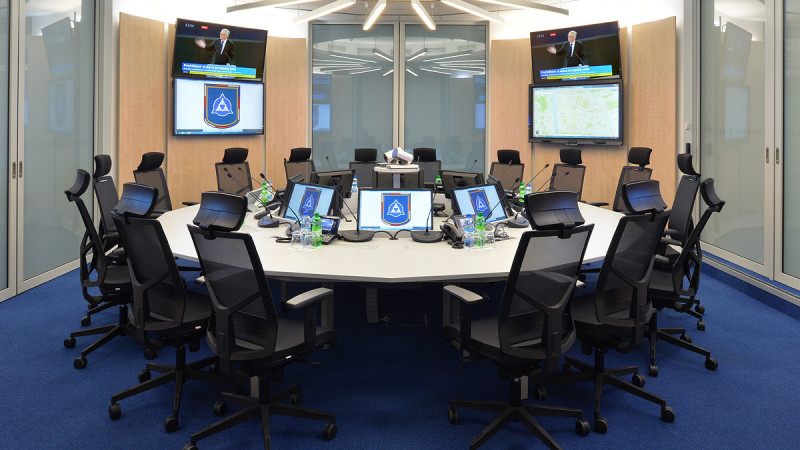
Training facilities of the South Moravian Region´s Emergency Ambulance Service
The Education and Training Department of the South Moravian Region Emergency Ambulance Service was established in 2012 as part of the Crisis Preparedness Department.
At that time, the paramedics had one lecture hall without training facilities for practical training. Therefore, they had no other option but to occupy other premises (e.g. drying room and storage rooms) provided by the emergency ambulance service and try to practice emergencies to save human life in them. What is the situation like today?
Car overturned off the road. A simulated accident to help rescuers prepare for real field interventions. The experience of the crew going to the case is essential. Every rescuer has to undergo practical and theoretical training under the roof of the new education and training centre of the South Moravian Region´s Emergency Ambulance Service every year.
”In early 2020 we opened a new training centre of the South Moravian Region´s Emergency Ambulance Service in Brno-Bohunice. It is a completely exceptional building not only in terms of its size and equipment, but also the sophisticated arrangement of precisely tailored training facilities. We tried to intervene in the design so that we could simulate everything that paramedics and students would encounter in the field. Today, we simulate any emergency situation from an accident in an industrial environment and transport to hospital and many others,” adds Jana Kubalová, Deputy for Crisis Preparedness and Education at the South Moravian Region Emergency Ambulance Service.
On the zero floor of the building there is a multifunctional hall with a climbing wall where specific rescue situations can be simulated for training air rescuers. The instructors have everything under control during the simulations, because they watch the whole group from a bird's eye view of the hall's gallery. One floor above, there are training classrooms for groups of about fifteen people, and on the second floor there are the lecturers’ offices, a fully equipped ambulance car or a replica of a normal apartment and other real spaces.
Firefighters and police officers are often used as “first responders” to help during resuscitation operations. This is because of their coverage in remote towns and villages. They can arrive at the accident location before the ambulance crew. In many cases, they are the first to start resuscitation, and it is not only for this reason that they are trained in the premises of the South Moravian Region´s Emergency Ambulance Service. A “first responder” is a trained first aid provider on request by the Medical Operations Centre of the Emergency Ambulance Service.
We go out up to 300 times during the day, mostly to patients with internal diseases, mainly related to heart, blood vessel and brain diseases.
How does the training simulation look like?
”During training simulations there are usually two instructors available. Both of them observe the simulation from a distance from the control room. One of the instructor is responsible for the technical setup and support, the other instructor designs the scenario and the course of the intervention with all possible interactions and critical points, which are then evaluated. The evaluation consists of two indicators. The first indicator is the subjective observation and behaviour of the intervening group. All actions of the whole team are continuously recorded by the audio and video SimStation system. The second indicator is the outputs from the simulators and other deployed technologies. All outputs are immediately available for debriefing discussions, which are used for team retrospective and progress analysis. What was applied well during the simulation, where it is necessary to improve or what needs to be done differently next time,” says Michal Jakubů, Emergency Ambulance Service instructor.
The more serious the scenario we prepare, the more challenging it is not only for the instructors, but especially for the rescuers and students. I am glad when we can break certain boundaries and at the same time take care of a patient in a serious condition. Sometimes it is enough to say a warm human word during an intervention and to be interested enough.
Jana Kubalová, Deputy for Crisis Preparedness and Education of the South Moravian Region Emergency Ambulance Service
The deployed technologies bring completely new possibilities of use; the biggest added value is the fact that we create a truly realistic environment. If you let people into a relatively natural environment, they will behave much more relaxed in it.
Michal Jakubů, instructor of the the South Moravian Region Emergency Ambulance Service.
First impressions of a participant of the simulation?
”For the first time I had the opportunity to combine theory with practice and try everything out for real. From my point of view, this is an invaluable experience, because only now I realized what practice actually means. I learned a lot of new information, but most importantly I could apply everything practically. My first impressions? It's not just about the experience mentioned above, the teamwork is equally important and we can really test each other. Thanks to audio and video recordings, we get to see all the procedures and situations that we are not even aware of during the intervention," Martina Valentová, a student and future rescuer, concludes her observations. “Personally, I take away many interesting insights. I would prefer to include more of such practical simulations in the future. At school we focus a lot on theory, in the training centre we can put theory into practice,” Martina Valentová adds.
Unique SimStation technology
”The education and training centre of the SMR Emergency Ambulance Service is ingeniously equipped with specific audio and video technology designed specifically for SimStation simulations. The training rooms have two to three full HD cameras that capture the space from different angles. Ceiling-mounted motion microphones are suspended throughout the simulation space to capture sound from the entire intervention. In addition, each team member carries a headset microphone, which is crucial for subsequent debriefing. The instructors in the rooms also use ceiling speakers and a projector to create the most realistic environment possible,” describes Jan Krákora, technical consultant and SimStation solution specialist of AV MEDIA, a.s.
COVID 19 and the future of the SMR EAS
During the coronavirus crisis and the state of emergency, the education and training centre did not slack off. An on-line distance course teaching was set up in conjunction with video conferencing and an on-line conference was held at the end of May - a replacement for the Brno Days of Emergency Medicine, where all remote participants and presenters from across the Czech Republic could actively participate. “In late 2020, the new simulation facilities at the Masaryk University Faculty Hospital will be completed. This will closely connect the SMR Emergency Ambulance Service with the Faculty Hospital and expand the simulations to include new medical discipline scenarios. AV MEDIA has implemented both projects and in cooperation with SimStation has designed the best solution that meets the most demanding user requirements,” concludes Viktor Gyönyör, Business Consultant of AV MEDIA, a.s.
Gallery
